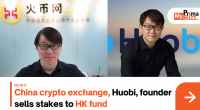US House Judiciary Subcommittee heard a harrowing but increasingly common story of injustice on facial recognition technology. Black man named Robert Williams was arrested in 2020 for allegedly stealing a watch from a Detroit store. But even though he hadn't been to the store in several years, police took him away in a police car in front of his two young daughters. He was held for more than 30 hours for crimes he did not commit.
Police went to the home of Robert Williams last year, arrested him in front of his family, and put him in jail for felony larceny.
— Keith Boykin (@keithboykin) May 17, 2021
The arrest was based solely on a facial recognition computer program.
But the computer picked the wrong man.#60Minutespic.twitter.com/AXdwJMNuW5
Facial Recognition Are 100 Times More Likely to Misidentify People of Colour
Law enforcement finding the wrong suspect is nothing new. What's new is how the police make these mistakes. In Williams' case, the Detroit Police Department used Michigan State Police's facial recognition program to identify the suspect from a grainy surveillance image. The technology landed on Williams using Michigan's database of driver's license photos as a possible match, resulting a high-tech mistake with grave human consequences.
The powerful surveillance tools used against Williams were up to 100 times more likely to misidentify Asians and Blacks than white men, according to a 2019 National Institute of Standards and Technology study. False-positive rates also increased in people from South Asia, Central America, and Native America.
Facial recognition technology (FRT), in addition to algorithmic bias, is used by law enforcement to identify peaceful protesters, investigate petty crimes, and arrest people who have no evidence of incrimination beyond a single FRT match. As a result, more and more people, especially people of those colour, are falling victim to this flawed, unregulated surveillance system. Despite the efforts of advocates and advocacy groups, the federal moratorium did not materialize.
From #FacialRecognition, to predictive technologies, #BigData policing is rife with technical, ethical and political landmines. (Toronto Star) #Data https://t.co/LGJ31Y4cuy pic.twitter.com/WcdO63PouB
— James Gingerich, @Expeflow #WorkEasier #RPA (@jamesvgingerich) October 5, 2022
The Facial Recognition Act limits the use of FRT and protects Americans from extreme and unethical uses of the technology. The act limits law enforcement uses to situations where a search warrant shows a probable cause for an individual to commit a serious violent felony. In addition, it prohibits law enforcement agencies from using FRT at protests and other constitutionally protected activities, and prohibits them from using the technology in conjunction with body, dashboard and aircraft camera footage. The bill has the backing of a broad coalition, from government watchdog groups and civil liberties groups to retired law enforcement officers and legal scholars.
The Facial Recognition Act prohibits matching as the only evidence to determine the cause of a possible arrest which is an important safeguard to prevent innocent people from being drawn into criminal investigations. By requiring all FRT used by law enforcement across the country to meet a uniform set of standards, the act ensures that the accuracy of results does not vary so dramatically based on an individual's skin colour.
Each year, more law enforcement agencies across the country are expanding their use of facial recognition technology. The Government Accountability Office reported that as of July 2021, 20 of the 42 federal agencies surveyed were using it as part of their law enforcement efforts. Additionally, state and local jurisdictions are increasing their reliance on FRT.

